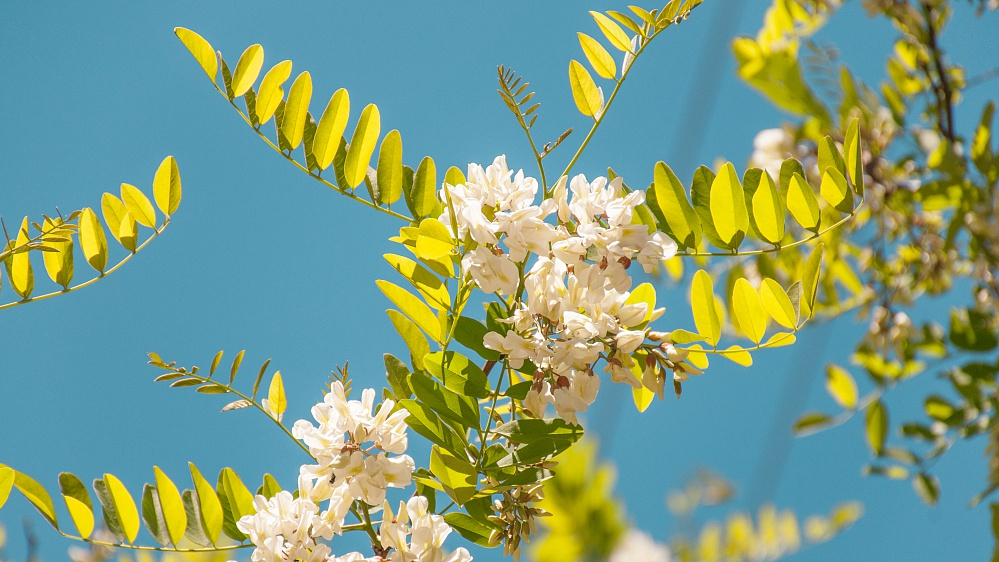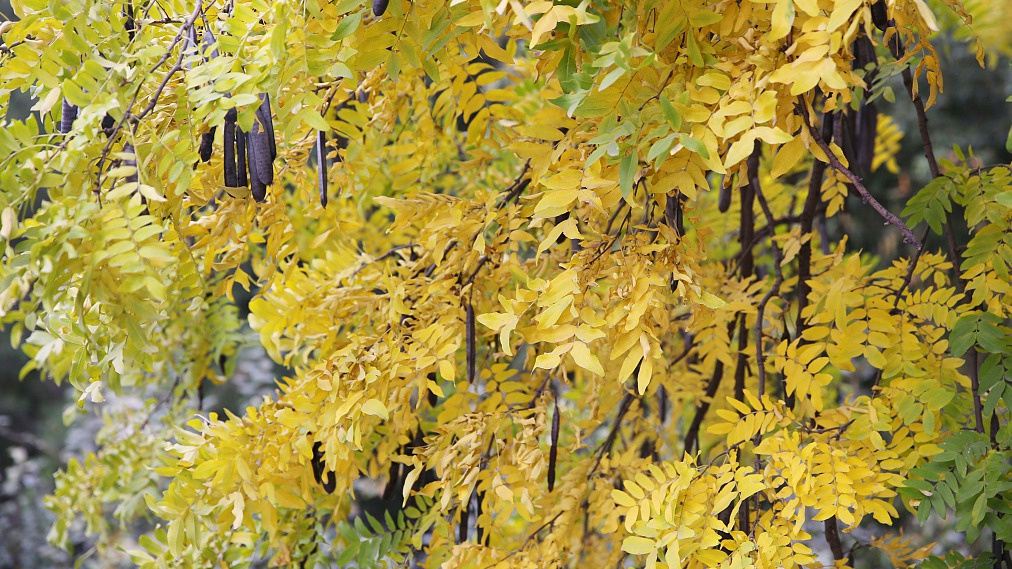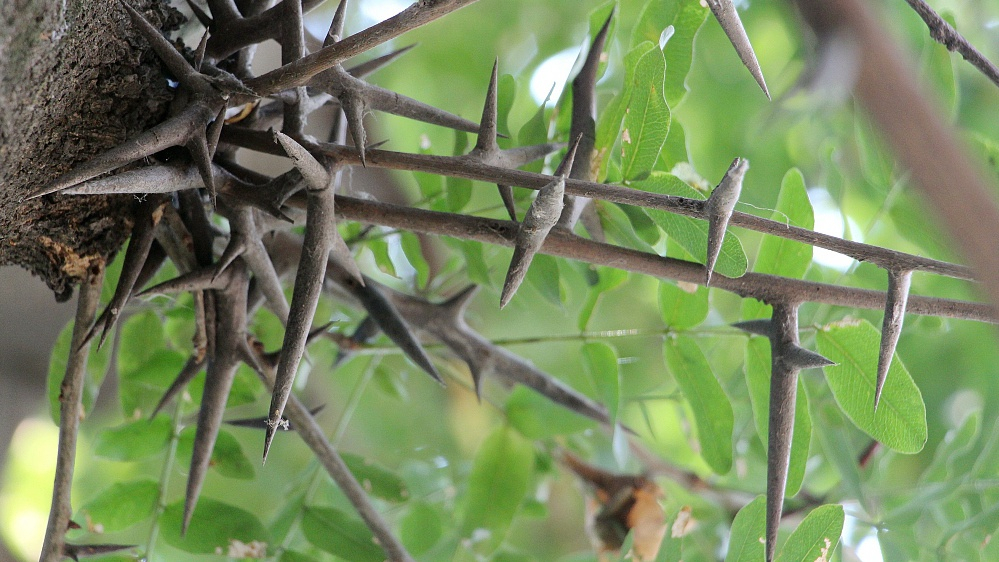

If you ask a Chinese what ancient people used to wash their hair, you are likely to get this answer: the fruits of a tree called zào jiá.
Chinese honeylocust, commonly known as zào jiá (皂荚), is a flowering plant with thick thorns. It can grow up to 30 meters with yellow or white flowers. It blooms from March to May, and produces fruit from May to December.

The Chinese honeylocust. /VCG Photo
Dubbed "soap bean", the tree's fruits have been used as detergent since at least 2,000 years ago. By boiling the beans, the alkaline water produced can remove grease from clothes or hair.

The fruits of the Chinese honeylocust. /VCG Photo
All parts of the Chinese honeylocust can be used in traditional Chinese medicine: its fruits for headache and cough; its leaves and roots for hypertension; and its thorns for inflammatory diseases.

The thorns of the Chinese honeylocust. /VCG Photo
These days, the trees are also planted around cities, environmentally friendly. They can live for hundreds of years to purify the air and reduce noise.
China's Flora Tour
From the wetlands along the east coast to the dense rainforests hidden in the west, China boasts an array of plant species. In this series, CGTN goes on a tour to learn about some of the most representative flora in different provinces and see how they live in harmony with local geography and climate.
China's Flora Tour: Guizhou-Elegant orchids bloom in the deep valley
China's Flora Tour: Guizhou-The harbinger of spring on Mount Fanjing
China's Flora Tour: Guizhou-A tree's growing strategy
China's Flora Tour: Guizhou-Together, we weather hard times
(Cover image designed by CGTN's Qu Bo)
(If you want to contribute and have specific expertise, please contact us at nature@cgtn.com.)

Copyright © 2018 CGTN. Beijing ICP prepared NO.16065310-3
Copyright © 2018 CGTN. Beijing ICP prepared NO.16065310-3